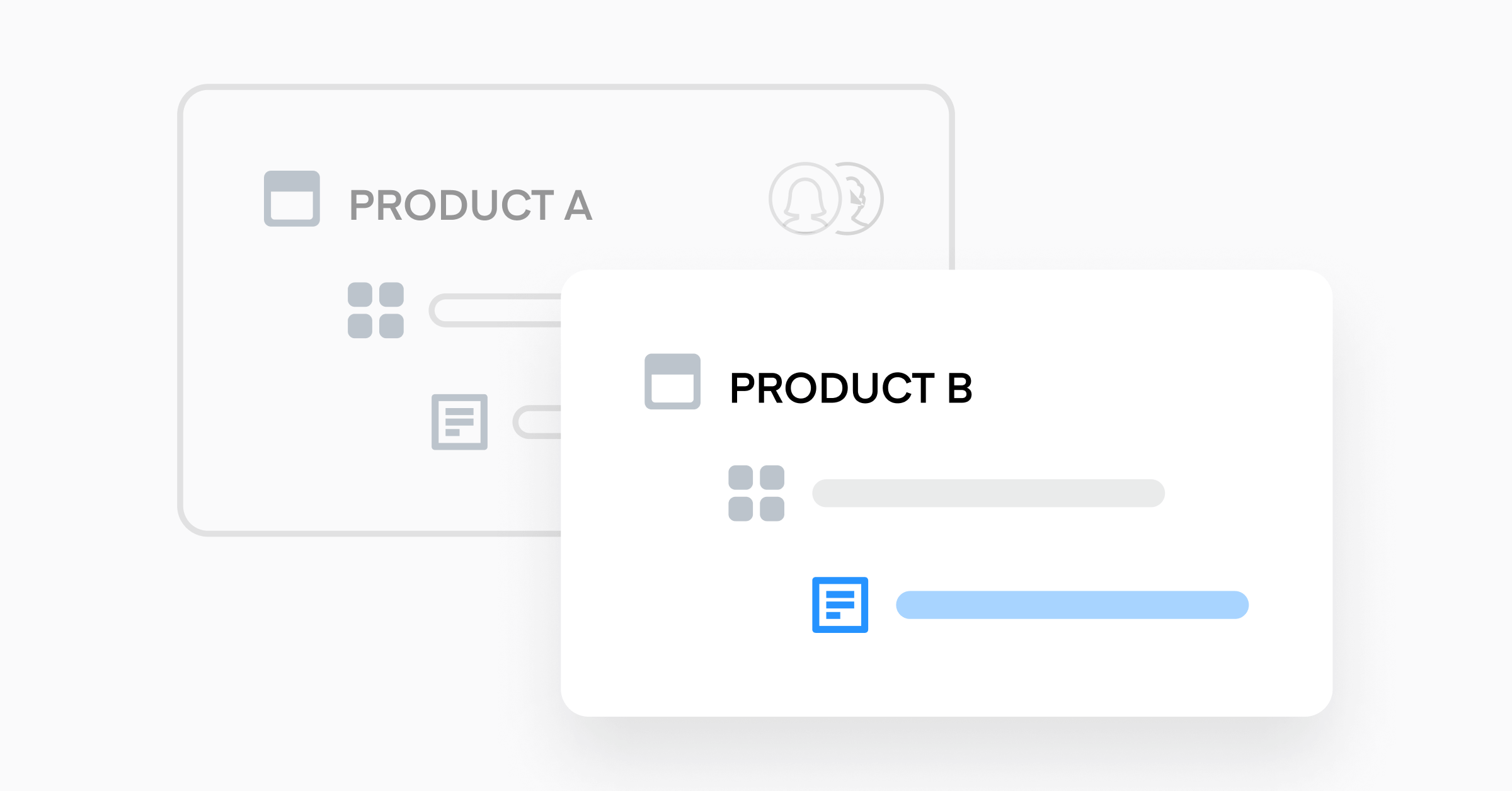Product Launch Strategy: A Comprehensive Guide for Success

What is a Product Launch Strategy?
Getting a product to market successfully takes significant planning and research, resources, and time. With so much invested in transforming an innovative idea into a tangible offering, it’s not enough to build the product—you need consumers to buy it.
A product launch strategy is a comprehensive plan designed to jumpstart, accelerate, and scale product adoption once something hits the market. It involves a series of coordinated actions and decisions to create awareness, generate interest, and appeal to specific target audiences. From market research, positioning, and messaging to pricing, distribution, and promotional activities, the goal is to make an impactful, positive first impression, and maximize the product’s chances of success against competitors.
Why is a Product Launch Strategy Important?
As the blueprint for introducing products to market in a purposeful and organized way, the product launch strategy provides a framework for aligning various aspects of the launch. It ensures that efforts are coordinated and resources are optimized, and that all aspects of the product roadmap are reflected as the product becomes a reality.
Without a well-defined strategy, a product launch will lack direction, risking miscommunication, inconsistent messaging, and wasted resources. A carefully crafted strategy helps build anticipation, showcase the unique value of the product, capture the attention of the target audience, and establish a solid foundation for sustained success. It’s essential for upping the chances of a new product’s initial acceptance—and its total lifetime.
Benefits of having a Product Launch Strategy
A product launch strategy isn’t a checklist; it’s a pathway to profit that deeply influences the overall success of introducing something new to market. Key benefits include:
- Clarity and direction that helps cross-functional teams understand roles and responsibilities, goals, timelines, and expectations.
- Consistent and cohesive messaging across all communication channels, reinforcing the product’s value proposition and brand identity, and making it easier for prospects to understand and remember.
- Proactive risk mitigation that helps PMs anticipate potential challenges, and that includes contingency plans to minimize any roadblocks to launch.
- Deeper market understanding through thorough market research, ensuring that what’s delivered is relevant and truly resonates with potential customers.
- Efficient resource allocation that’s clearly connected to outcomes, preventing unnecessary work and improving ROI across the product’s lifecycle.
- Competitive positioning that highlights unique selling points and directly addresses consumer needs, allowing the product to stand out in a crowded space.
- Post-launch steps for sustained success that supports ongoing marketing efforts, customer feedback, and product improvements.
What’s the Difference Between a Product Launch Strategy and a Product Launch Plan?
In short, a product launch strategy sets down the guiding principles and objectives of a release, while a product launch plan translates those principles into actionable steps for the product team to follow.
The product launch strategy outlines the overall approach and goals for introducing a new product. It establishes the target audience, positioning, messaging, and the overall market landscape. It’s a handbook for how the product will be presented to the market and how it will expand and function over time, with a focus on the broader context and vision for the launch.
On the other hand, a product launch plan is a more detailed, tactical document that’s built from the overarching strategy. It breaks down the strategy into specific actions, tasks, and timelines, and includes granular details such as specific marketing tactics, communication channels, budget allocations, and responsibilities assigned to different team members or departments. The launch plan is essentially the step-by-step guide that operationalizes the strategy.
Components of an Effective Product Launch Strategy
While a product launch strategy can vary quite a bit depending on the nature of the product and the industry being served, core pieces include:
- Conducting thorough research to understand the target market, customer needs, preferences, and existing competitors.
- Clearly defining the target audience for the product by understanding the demographics, behaviors, and preferences of the intended consumers.
- Articulating the unique value proposition of the product, like what sets it apart from competitors, and how it addresses specific needs or problems for the target audience.
- Determining the positioning of the product in the market, from how it fits into the existing portfolio and landscape, and what key messages should be emphasized to communicate those outcomes.
- Developing a comprehensive messaging strategy that communicates the key benefits of the product, from compelling taglines to product descriptions and other promo assets.
- Creating a complete timeline that outlines the sequence of activities leading up to the launch and after. This includes pre-launch teasers, the launch itself, and post-launch efforts.
- Determining the distribution and pricing strategy based on market research, production costs, and perceived value.
- Planning promotional activities and assets to generate awareness and interest, such as digital marketing, traditional advertising, PR, content marketing, and social media.
- Developing training and enablement programs for sales and CS teams and equipping them to accurately communicate the product’s features and benefits.
- Establishing key performance indicators (KPIs) to measure success of the launch, like sales goals, usage thresholds, and website traffic.
- Anticipating potential challenges and identifying potential risks, as well as outlining strategies to address them promptly.
Tactics to Creating a Successful Product Launch Strategy
Understanding the market and target audience, crafting a compelling value proposition, strategically positioning the product, and developing clear and cohesive messaging: four steps to success, when built on the foundation of a thoughtful and well-rounded plan.
1. Pre-Launch Activities
Before the official introduction of the product, the goal is to build anticipation, generate awareness, and lay the groundwork for a seamless and impactful product launch. Success starts with market research, audience identification, setting a strategic launch timeline, and creating promotional tactics. But it also takes solid messaging, positioning, and competitive intel—in addition to a narrative that speaks directly to the target audience.
1. Writing a Compelling Story
A product’s story—or, how it’s discussed and placed within a market—should highlight the unique value of the offering. It goes beyond listing features, instead creating a clear connection between the product and user benefit, solution and pain point. A compelling story is an authentic and aspirational tool, and sets the stage for a memorable and impactful product launch that resonates with the target audience.
4. Product Promotion in Multiple Channels
The most effective product promotions are diverse and deliberate. Businesses that make a coordinated effort to advertise and create awareness for new products across platforms and channels will have a broader reach, and an expanded pool of prospects to engage.
3. Making Use of Influencer Marketing
Influencer marketing is a widespread and growing way to do one-to-many marketing and advocacy in the same motion. By partnering with creators or professionals who have significant online followings and platforms to promote and endorse products, businesses add credibility to their claims while generating awareness, building trust, and creating interest.
How to Create a Product Launch Strategy
5 Essential Stages of a Product Launch Strategy
Here are five essential stages (with steps) to guide you through the process of creating an effective product launch strategy.
-
Market Research and Analysis
- Conduct thorough market research to understand the industry, target audience, and competitive landscape.
- Identify market trends, customer needs, and potential gaps in the market.
- Analyze competitor product launches to learn from successes and failures.
-
Define Your Target Audience
- Clearly define the target audience based on insights gathered from market research.
- Develop detailed buyer personas to understand the demographics, behaviors, and preferences of ideal customers.
- Tailor the product and launch strategy to address the specific needs and pain points of the target audience.
-
Craft a Compelling Value Proposition
- Clearly articulate the unique value that the product brings to the market.
- Define the key benefits and advantages that set the product apart from competitors.
- Ensure that any value propositions resonate with the identified needs of the target audience.
-
Develop a Comprehensive Launch Plan
- Create a detailed launch plan that outlines the sequence of activities leading up to and following the product launch.
- Specify the marketing channels, promotional tactics, and communication strategies.
- Set a realistic timeline for each phase of the launch, considering factors such as pre-launch teasers, the launch event, and post-launch follow-ups.
-
Determine Metrics and Measurement
- Establish key performance indicators (KPIs) to measure the success of the product launch.
- Define specific goals related to sales, customer acquisition, brand awareness, and other relevant metrics.
- Regularly monitor and analyze the performance data to assess the effectiveness of the launch strategy and make informed adjustments.
Common Reasons Why Product Launch Strategies Fail
Product launch strategies can fail for a variety of reasons, whether environmental, conditional, or unintentional. A successful strategy requires a holistic approach that considers everything with the potential to influence market reception.
Often, unsuccessful launches are rooted in a lack of market understanding and insufficient audience research, both of which result in unclear value propositions and ineffective messaging. Poor timing, subpar promotional efforts, and reluctance to adapt with feedback are equally damaging, as is underestimating the competition.
But the fastest route to failure is misaligning pricing with perceived value—something that’s much easier to avoid when businesses invest in understanding their audience’s goals, pain points, and limitations up front.
Post-Product Launch Strategy
The post-product launch strategy phase is crucial for sustaining momentum, addressing customer feedback, and creating long-term success. It should enable cross-functional teams to:
- Actively gather and analyze customer feedback to identify areas for improvement, and iteratively enhance the product based on user experiences and preferences.
- Maintain consistent marketing efforts to keep the product in the spotlight, share success stories, and provide updates to reinforce the product’s value.
- Provide robust customer support to address inquiries and issues promptly, and engage with customers through various channels to build loyalty.
- Continuously monitor and assess key performance indicators (e.g., sales, customer satisfaction scores, market share) to gauge the product’s ongoing success.
- Explore opportunities for product line extensions, additional features, or entry into new markets.
- Stay vigilant to changes in the market, industry trends, and competitor efforts, and be able to adapt the product strategy accordingly.
- Foster a sense of community among users through forums, social media, or other platforms, as well as encourage user-generated content and discussions to enhance the product’s ecosystem.
- Explore collaborations with other businesses or influencers to expand reach and appeal, and seek out partnerships to introduce new perspectives and opportunities for growth.
- Regularly reassess the product’s pricing strategy and positioning in the market to ensure alignment with customer perceptions and the evolving competitive landscape.
- Maintain a long-term vision for the product’s evolution and success by continuously innovating and evolving to stay ahead.
Success Metrics
It’s important to align whatever metrics a product is measured by with the overall objectives of the launch (and the business overall). A mix of short-term and long-term metrics will give PMs a comprehensive view of the product’s success and its total impact on the business.
Regularly monitoring and analyzing these metrics will also provide insight into the effectiveness of the launch strategy, and inform adjustments and improvements over time. Here’s a list of metrics to consider:
Sales Performance
- Total sales revenue
- Units sold
- Sales growth rate
Customer Acquisition
- Number of new customers
- Customer acquisition cost (CAC)
- Conversion rates from leads to customers
Market Share
- Percentage of market share gained
- Competitive positioning in the market
Customer/Prospect Engagement
- Website/campaign page traffic
- Social media engagement (likes, shares, comments)
- Email open and click-through rates
Product Adoption
- Number of product sign-ups or registrations
- Rate of product adoption among target users
Customer Satisfaction
- Net Promoter Score (NPS)
- Customer feedback and reviews
- Customer support ticket volume and resolution time
Brand Awareness
- Brand mentions and sentiment on social media
- Media coverage and PR mentions
- Website and social media follower growth
Return on Investment (ROI)
- ROI on marketing and promotional activities
- ROI on overall product development and launch costs
Product Performance
- User engagement with key product features
- Product performance metrics (e.g., app downloads, usage frequency)
Retention Rates and Strategic KPIs
- Customer retention rates
- Churn rates
- Completion of specific strategic goals outlined in the product launch strategy
Feedback/Reviews
Feedback and reviews are pivotal for a product’s success and perception. Integrating them into your launch strategy requires thoughtful consideration. Key aspects include timing—gathering pre-launch feedback and encouraging post-launch reviews. Choose appropriate feedback channels, align with user personas, and provide incentives.
Establish a responsive mechanism for addressing concerns and integrate feedback into product development. Regularly monitor, analyze, and promote positive feedback. Educate users on sharing feedback, employ moderation, and view this as a long-term strategy for continuous improvement and customer satisfaction.
Promotions Post-Launch
Post-launch promotions are vital for maintaining momentum and maximizing a product’s impact. Things like limited-time offers create urgency, while bundle offers provide increased value, and referral programs incentivize customers to share reviews and recommendations. Business should also implement:
- Cross-sell and upsell campaigns to promote additional purchases
- Exclusive access rewards for specific customer actions
- Loyalty programs, flash sales, and social media contests
- Ongoing email marketing, partnerships, and product demonstrations to target specific and new segments
- Customer-focused events, both virtual and in-person, to foster ongoing user engagement and positive relationships beyond the initial launch.
Productboard: You Partner In Creating an Effective Product Launch Strategy
Productboard is a comprehensive product management platform, ideal for creating flexible, thorough product launch strategies. By providing a centralized hub for all product-related information, Productboard integrates user persona details and ongoing user feedback, helping PMs gain a deep, detailed understanding of customer needs that can evolve alongside shifts in demand.
With features like roadmap planning and idea management, teams can strategically prioritize and plan product launches with confidence that both broad context and details are being captured and considered. Productboard’s analytics and performance tracking enable consistent, data-driven decision-making, and iterative development support allows teams to refine strategies based on real-time updates.
Leading businesses in every industry rely on Productboard to drive cross-functional visibility, foster transparency, and bring clarity to the product launch strategy process. Start a free trial today to see how your business can build products that see accelerated adoption and sustained success with every launch.




